Preconditions
- Have the Inbound Servers section configured from the administration. View Email Settings
- Have email notification rules set up. View Rules
Add notes by email
This functionality allows you to add notes to the case by responding to the notification emails that are generated by the different rules that you have configured. The following example sets up a rule that notifies the customer by mail when a case is posted.

Log a case from one of the consoles to generate the notification email.
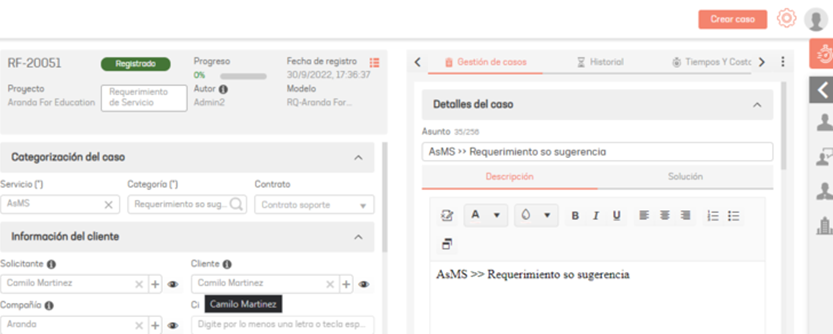
When the email arrives in the customer’s inbox, the sent message will be displayed along with the following line at the top:
—Automatic Message [IM-XXX]: To answer, do it on this line—
⚐ Note: When replying, be sure to write the message directly over the previous line. Any text added above that line will be recorded as a note in the case. Avoid modifying it, as any changes can prevent the mail from being processed and the note from being added to the case.
Send the reply to the email account configured to receive this information.
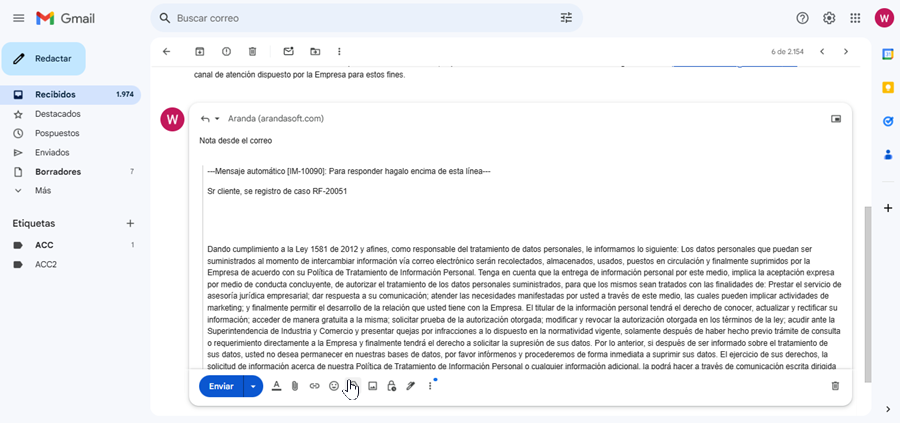
When the email arrives at the receiving account, the Aranda Worker Service will be in charge of processing the message along with the email attachments, which will be attached to the case as public and including the public note to the case.
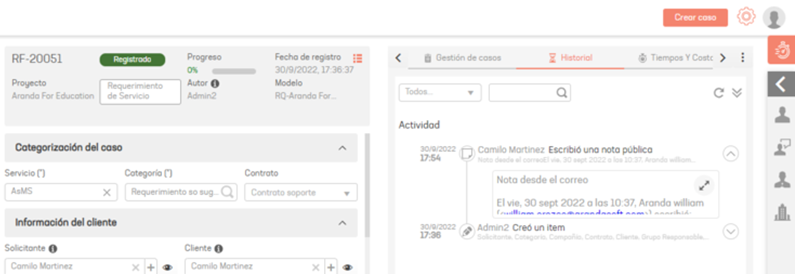
⚐ Notes:
- The first response, or any response to the initial notification email, is stored correctly in the case notes. However, subsequent responses within the same email chain are not recorded in the case notes.
- The following file formats will not be attached to the case: “.jpg”, “.jpeg”, “.png”, “.bmp”, “.tiff”, “.tif”, “.webp”, “.svg”, “.ico”, “.gif”.
Change of status by mail
This functionality allows specialists to change the status of the cases by responding to notification emails that are generated by the rules that are configured.
Note:
- It is only possible to change to states, with Solved behavior and/or Revision.
- The specialist who answers the email must be associated with a group of specialists and have permissions to edit cases.
The following example configures a rule that notifies the specialist when the case is in a state prior to the state with “Fixed” behavior.

Log a case and bring it to the state configured in the rule.

Once the information arrives in the specialist’s inbox, the reply to the email account configured to receive these messages, with the following structure:
{Status=”Status with Behavior Fixed”}
{Commentary=”Solution Comment”}
{Note=”Additional Note to the Case”}

Remarks:
- If text exists outside the structure, this information is added as an additional note to the case.
- You don’t have to submit the {Note=} section.
- If the completed status is invalid, the status does not change and a private note is added to the case reporting the error.
- If the solution comment is empty or not sent within the structure, it does not change the status of the case and a private note is added to the case reporting the error.
- If the filled status does not have “Solved” and/or “Review” behavior, the status does not change and a private note is added to the case informing of the error.
- If there are additional required fields in the status, it does not change it and a private note is added to the case reporting the error.
- If the filled status does not correspond to the configured flow, the status does not change and a private note is added to the case reporting the error.
When the email arrives at the receiving account, the Aranda Worker Service will be in charge of processing the message along with the email attachments, which will be attached to the case as public and making the corresponding changes to the case.
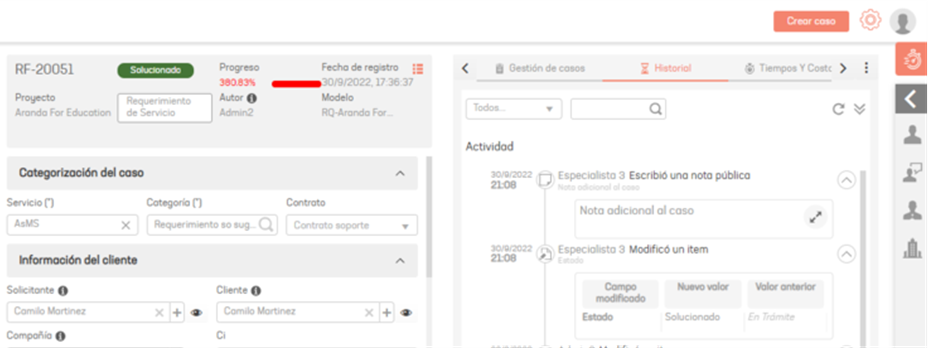
⚐ Notes:
- The following file formats will not be attached to the case: “.jpg”, “.jpeg”, “.png”, “.bmp”, “.tiff”, “.tif”, “.webp”, “.svg”, “.ico”, “.gif”.
Automatic Categorization
The Automatic Categorization functionality in Case Creator provides users with the ability to create cases and categorize them based on AI models and actions AI set up in the Admin console. See C.A configuration
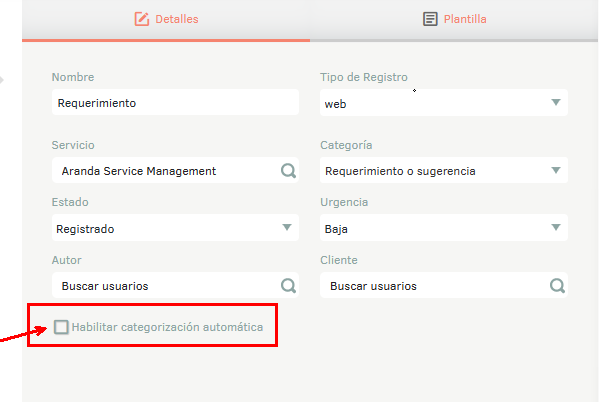
⚐ Note: When creating and categorizing cases by mail, the console will attempt to get the user from the sender’s mail. If this does not exist, an attempt will be made to obtain the user from the client field (1) of the template configuration. In case the client field is not configured, it will seek to obtain the user of the author field (2). If there is no information in any of these fields, the case will be created with the default settings without being categorized.



